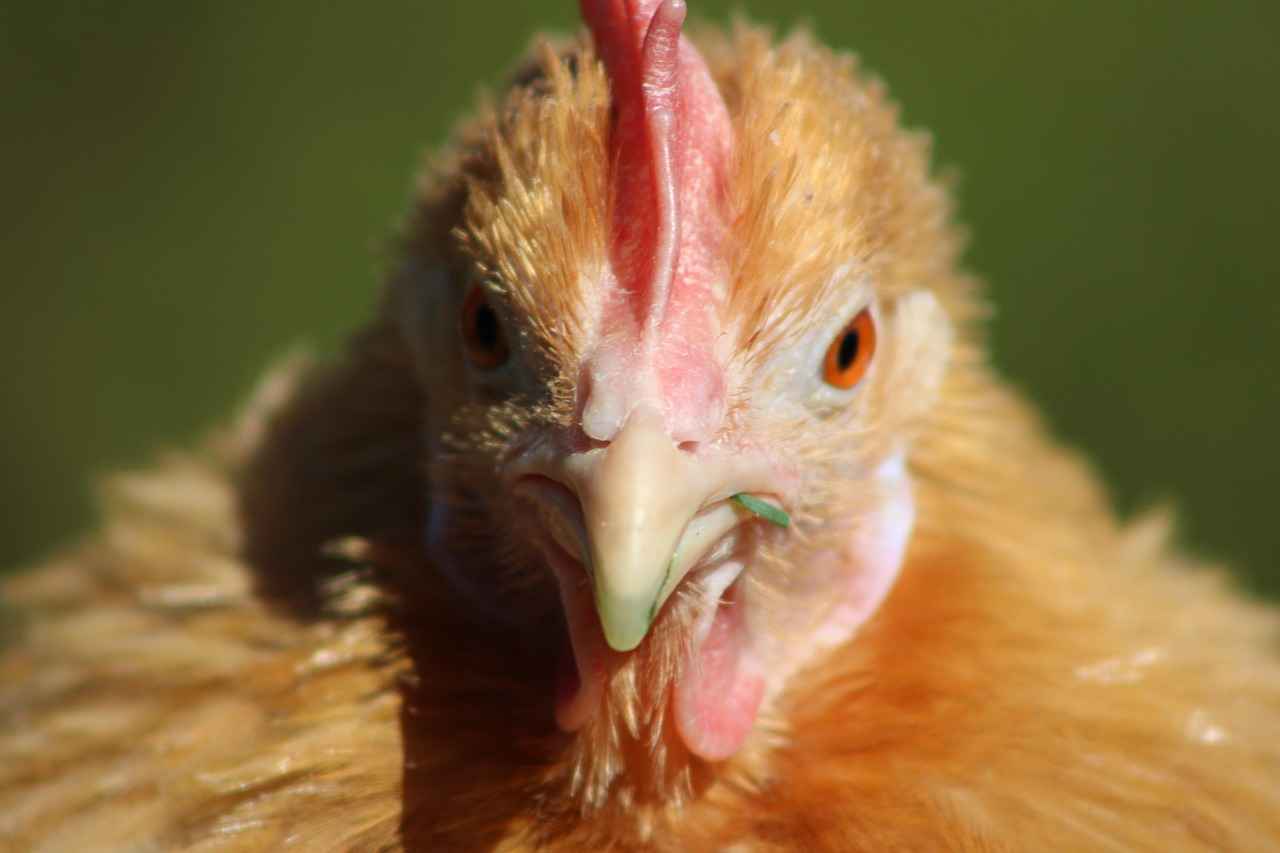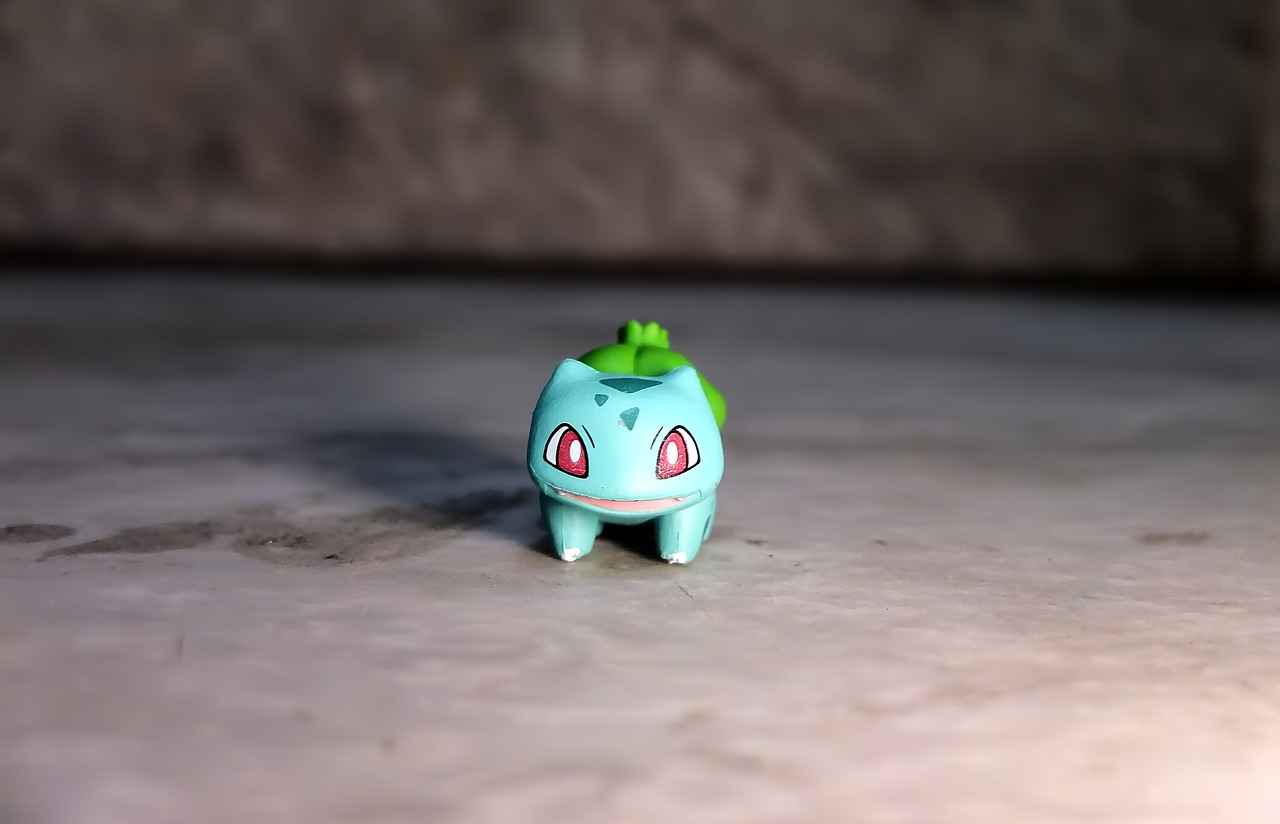Discover the intriguing aspects of Garbodor, a unique Pokémon known for its distinctive design and competitive potential. This guide will delve into Garbodor’s evolution from Trubbish, explore its most effective moves, and provide strategies to maximize its effectiveness in battles.
Understanding Garbodor’s Evolution
Garbodor evolves from Trubbish at level 36, marking a significant transformation. This evolution not only enhances its stats but also unlocks a variety of moves that can be pivotal in competitive play. Trainers should focus on evolving Trubbish at the right time to ensure they can take advantage of Garbodor’s full potential.
Best Moves for Garbodor
Choosing the right moveset is crucial for Garbodor’s success in battles. Below are some of the top moves that trainers should consider:
- Top STAB Moves: Garbodor benefits greatly from its STAB (Same Type Attack Bonus) moves like Gunk Shot and Sludge Bomb, which maximize its Poison-type damage output.
- Coverage Moves: Moves such as Earthquake and Rock Slide can help Garbodor counter a variety of threats in competitive play.
- Utility Moves: Incorporating moves like Toxic Spikes can provide strategic advantages by poisoning opposing Pokémon upon switching in.
Competitive Strategies for Garbodor
To thrive in competitive settings, trainers should adopt effective strategies tailored to Garbodor’s strengths. Utilize its bulk to absorb hits while setting up hazards or disrupting opponents with moves like Clear Smog.
Garbodor’s Role in Competitive Teams
Understanding how Garbodor fits into team compositions is vital for success. Its role as a defensive pivot can be enhanced by pairing it with Pokémon that can cover its weaknesses. Consider using Pokémon like Steel-types to handle Fairy-type threats.
Synergies with Other Pokémon
Building synergies with Pokémon like Ferrothorn and Gardevoir can amplify Garbodor’s effectiveness on the battlefield. These combinations can create a balanced team capable of dealing with various threats.
Countering Common Opponents
Identifying common threats is essential for any trainer. Garbodor’s weaknesses to Psychic and Ground-type moves can be mitigated by having teammates that can absorb or resist these attacks, ensuring Garbodor remains an effective asset throughout battles.
In conclusion, Garbodor may be an unconventional choice, but with the right strategies and moves, it can be a formidable contender in competitive Pokémon battles. By understanding its evolution, moves, and team dynamics, trainers can unlock its full potential.

Understanding Garbodor’s Evolution
Garbodor is a fascinating Pokémon that has captured the attention of trainers around the world. Evolving from Trubbish, Garbodor showcases a unique transformation that not only alters its appearance but also enhances its capabilities in battles. This evolutionary process is essential for trainers aiming to maximize Garbodor’s potential in various competitions.
Understanding the evolution from Trubbish to Garbodor involves recognizing the changes in stats, abilities, and move sets. Trubbish, a Poison-type Pokémon, evolves into Garbodor at level 36, gaining significant boosts in its base stats, particularly in Attack and Defense. This evolution not only makes Garbodor a formidable opponent but also alters its role in team compositions.
As a trainer, it is crucial to understand the implications of Garbodor’s evolution. With its new abilities, such as Stench and Aftermath, Garbodor can disrupt opponents while providing valuable support to its team. The evolution also unlocks a wider range of moves, allowing for greater flexibility in battle strategies.
To optimize Garbodor’s performance, trainers should focus on its strengths and weaknesses. While Garbodor excels in bulk and can absorb hits, it is vulnerable to Psychic and Ground-type moves. Therefore, integrating Pokémon that can cover these weaknesses is essential for a balanced team.
In summary, understanding Garbodor’s evolution from Trubbish is vital for any trainer looking to utilize this Pokémon effectively in battles. By recognizing its enhanced capabilities and strategic roles, trainers can leverage Garbodor’s strengths to achieve success in competitive play.

Best Moves for Garbodor
Garbodor is a unique Pokémon that can be a formidable opponent in battles when equipped with the right moveset. Selecting the optimal moves is crucial for maximizing its effectiveness and ensuring it can handle various competitive scenarios. This section will delve into the best moves for Garbodor, including STAB (Same Type Attack Bonus) options and essential coverage moves that enhance its battle performance.
Garbodor’s primary STAB move is Gunk Shot, which boasts high power and a chance to poison the target. Another excellent STAB option is Sludge Bomb, which offers a reliable damage output and a chance to inflict poison with its 30% chance to do so. Utilizing these STAB moves effectively can significantly increase Garbodor’s damage potential, allowing it to take down opponents more efficiently.
In addition to STAB moves, Garbodor has access to several coverage moves that can help it counter common threats. Moves like Earthquake provide coverage against Steel and Rock types, while Drain Punch can deal with Dark and Normal types while also restoring some health. These options allow Garbodor to adapt to various matchups, making it a more versatile choice in competitive play.
Garbodor can also play a supporting role in battles. Moves like Toxic Spikes are invaluable for setting up hazards, which can cripple opposing teams. Additionally, Will-O-Wisp can burn foes, reducing their physical attack power and providing Garbodor with opportunities to switch or attack strategically.
In conclusion, selecting the right moves for Garbodor is essential for trainers aiming to maximize its potential in battles. By focusing on strong STAB options, effective coverage moves, and utility support, Garbodor can become a formidable asset on any competitive team.
Top STAB Moves for Garbodor
In the competitive Pokémon landscape, STAB (Same Type Attack Bonus) moves play a crucial role in maximizing a Pokémon’s damage output. For Garbodor, a Poison-type Pokémon, leveraging its STAB moves can significantly enhance its effectiveness in battles. This section delves into the most powerful STAB moves available to Garbodor and their strategic applications.
- Gunk Shot: This is one of Garbodor’s most potent STAB moves, boasting a base power of 120. Although it has lower accuracy (80%), its ability to potentially poison the target makes it a formidable choice. Trainers should use Gunk Shot when aiming to deal heavy damage to opposing Pokémon, especially those weak to Poison-type attacks.
- Sludge Bomb: With a base power of 90 and an accuracy of 100%, Sludge Bomb is a reliable option. It also has a 30% chance to poison the target, making it a valuable move for wearing down opponents over time. This move is particularly effective against Fairy and Grass types, which are common in many competitive formats.
- Toxic Spikes: While not a direct attack, this move sets up hazardous terrain for opponents. It lays down spikes that poison any opposing Pokémon that switch in, providing strategic advantage throughout the battle. This move synergizes well with Garbodor’s defensive capabilities, allowing it to support the team while dealing damage indirectly.
- Poison Jab: A solid choice with a base power of 80 and 100% accuracy, Poison Jab is useful for consistent damage output. It also has a 30% chance to poison the target, making it a reliable option in various situations.
In summary, utilizing these STAB moves effectively can elevate Garbodor’s performance in battles. By understanding the strengths and strategic applications of each move, trainers can optimize their gameplay and enhance their competitive edge.
Coverage Moves to Consider
In competitive Pokémon battles, having a diverse moveset is essential for adapting to various opponents. While Garbodor excels with its STAB moves, it also has access to an array of coverage moves that can help it counter prevalent threats in the metagame. This section will delve into some of the most effective coverage moves that Garbodor can learn, enhancing its versatility on the battlefield.
- Gunk Shot: Although a STAB move, it’s worth mentioning due to its high base power and ability to inflict significant damage on Fairy-types, which are often problematic for Garbodor.
- Earthquake: This ground-type move allows Garbodor to hit Steel-types and Electric-types hard, providing excellent coverage against Pokémon like Aegislash and Zapdos.
- Rock Slide: With its ability to hit Flying-types and Fire-types, Rock Slide can be a game-changer against threats like Talonflame and Charizard.
- Fire Punch: A great option against Steel-types that resist Garbodor’s poison moves. This move can help take down Pokémon like Scizor and Ferrothorn.
- Sludge Bomb: Another powerful poison-type option, Sludge Bomb can also potentially poison the target, providing additional tactical advantages.
By incorporating these coverage moves into Garbodor’s arsenal, trainers can effectively address various threats faced in competitive play. The key is to choose moves that not only complement Garbodor’s strengths but also exploit the weaknesses of common opponents. A well-rounded moveset can turn Garbodor into a formidable contender on any team.
Utility Moves for Team Support
Utility moves play a critical role in enhancing Garbodor’s effectiveness in competitive battles. These moves not only bolster Garbodor’s own performance but also provide significant support for the entire team while disrupting opponents’ strategies. Understanding the utility moves available to Garbodor can lead to a more dynamic and strategic gameplay experience.
One of the standout utility moves for Garbodor is Toxic Spikes. This move allows Garbodor to lay down spikes that poison any opposing Pokémon that switches in. By strategically placing Toxic Spikes, trainers can apply consistent pressure on the opposing team, forcing them to manage their health while also limiting their switch options. This move is particularly effective against teams that rely on switching frequently.
Another valuable utility move is Will-O-Wisp, which inflicts a burn on the target. This not only deals damage over time but also reduces the attack power of physical attackers, making it an excellent choice for weakening threats. Garbodor can utilize this move to disrupt opponents’ offensive strategies, allowing its teammates to capitalize on weakened foes.
Additionally, Garbodor can learn Clear Smog, which resets the stat changes of the target. This move is particularly useful against opponents that rely on boosting their stats, such as setting up with Swords Dance or Dragon Dance. By negating these boosts, Garbodor can turn the tide of battle in its favor.
Moreover, Garbodor can utilize moves like Protect to shield itself from incoming attacks while allowing its Toxic Spikes to take effect. This move can also be used strategically to scout opponents’ moves, making it a versatile choice in many scenarios.
In conclusion, Garbodor’s utility moves significantly enhance its role as a team supporter and disruptor. By effectively utilizing moves like Toxic Spikes, Will-O-Wisp, and Clear Smog, trainers can maximize Garbodor’s impact in battles, making it a formidable presence on the battlefield.
Competitive Strategies for Garbodor
In the competitive Pokémon scene, Garbodor stands out as a unique choice due to its diverse move pool and strategic potential. To maximize its effectiveness in battles, trainers must implement a variety of strategies that leverage Garbodor’s strengths while minimizing its weaknesses. This section will explore essential tactics for competitive play.
- Utilizing Toxic Spikes: One of Garbodor’s standout features is its ability to set up Toxic Spikes. This move can poison opposing Pokémon upon entry, providing a significant advantage. Trainers should prioritize this setup early in the match to wear down opponents over time.
- Maximizing Bulk with Defensive Builds: Garbodor has a respectable base defense and special defense. Incorporating items like Black Sludge can enhance its survivability, allowing it to absorb hits while gradually restoring health. This strategy is particularly effective against physical attackers.
- Employing Status Moves: Moves such as Will-O-Wisp and Clear Smog can disrupt the opposing team’s strategy. Will-O-Wisp inflicts burn, reducing physical damage output, while Clear Smog resets stat changes, ensuring Garbodor remains a consistent threat.
- Choosing the Right Abilities: Garbodor’s ability, Stench, can flinch opponents, providing a chance to disrupt their attack plans. Alternatively, Aftermath can punish foes that knock Garbodor out, dealing damage in return. Trainers should choose based on their team composition and battle style.
- Incorporating Coverage Moves: While Garbodor excels at setting up hazards, coverage moves like Gunk Shot and Drain Punch are essential for dealing with threats. Gunk Shot provides STAB damage, while Drain Punch offers recovery and counters Steel-types.
In conclusion, Garbodor can be a formidable contender in competitive play when trainers adopt effective strategies. By leveraging its bulk, utilizing status moves, and setting up hazards, Garbodor can significantly impact battles. Understanding these tactics will not only enhance Garbodor’s performance but also contribute to the overall success of the team.

Garbodor’s Role in Competitive Teams
Garbodor is often underestimated in competitive Pokémon play, but its unique abilities and diverse move set make it a valuable asset in team compositions. Understanding how to effectively integrate Garbodor into your strategy can significantly enhance your chances of success in battles.
Garbodor serves primarily as a defensive wall, capable of absorbing damage while providing valuable support to its teammates. With its access to moves like Toxic Spikes and Spikes, Garbodor can set up hazards that pressure opposing teams, forcing them to switch out and take residual damage. This ability to control the battlefield is crucial for wearing down opponents over time.
Moreover, Garbodor’s typing grants it resistances to several common types, allowing it to switch in on attacks that would threaten other Pokémon. Its ability, Stench, can also flinch opponents, creating opportunities for your team to capitalize on. When paired with Pokémon that can take advantage of the hazards Garbodor sets, such as strong sweepers, it can create a formidable synergy.
| Strengths | Weaknesses |
|---|---|
| High Defense | Vulnerable to Fighting and Ground types |
| Access to Hazard Moves | Low Speed |
| Good Typing | Special Defense is Lacking |
In terms of synergy, pairing Garbodor with Pokémon that can benefit from its hazards is key. For example, fast sweepers like Gyarados or Dragapult can capitalize on weakened opponents, while specially defensive Pokémon like Florges can help cover Garbodor’s weaknesses. Together, they can create a balanced team that can withstand various threats.
In conclusion, understanding and leveraging Garbodor’s strengths and weaknesses can lead to successful team compositions. By integrating Garbodor thoughtfully into your strategy, you can enhance your overall team performance and increase your chances of victory in competitive play.
Synergies with Other Pokémon
Creating effective team synergies can significantly amplify Garbodor’s impact in competitive battles. By pairing Garbodor with the right Pokémon, trainers can enhance overall team performance, cover weaknesses, and create strategic advantages. This section will delve into some Pokémon that synergize well with Garbodor, enabling trainers to build formidable teams.
- Ferrothorn: This Steel/Grass type provides excellent support with its high defensive stats. Ferrothorn can set up hazards like Spikes and Stealth Rock, complementing Garbodor’s own ability to lay down Toxic Spikes. Together, they can create a formidable hazard stack that pressures opponents.
- Gardevoir: With its Fairy/Psychic typing, Gardevoir can cover Garbodor’s weaknesses to Fighting and Psychic types. Additionally, Gardevoir’s ability to provide strong special attacks and support moves like Wish can keep Garbodor healthy throughout battles.
- Dragapult: This Dragon/Ghost type offers great offensive pressure and can outspeed many threats. Dragapult can deal with Psychic and Ghost types that threaten Garbodor, while also providing coverage against popular meta Pokémon.
- Corviknight: As a Flying/Steel type, Corviknight can switch in on Ground and Fighting moves aimed at Garbodor. Its ability to set up Defog helps maintain a clean field, allowing Garbodor to function optimally without being hindered by opposing hazards.
By integrating these Pokémon into your team, you can create a balanced and synergistic lineup that maximizes Garbodor’s potential. Understanding the strengths and weaknesses of each Pokémon will help you navigate competitive battles more effectively.
Countering Common Opponents
Identifying and countering common threats is crucial for any trainer looking to maximize their success with Garbodor. This section will delve into Garbodor’s vulnerabilities and provide effective strategies to deal with popular competitive Pokémon.
Garbodor, being a Poison-type Pokémon, has some notable weaknesses. It is particularly vulnerable to Ground and Psychic type moves. Understanding these weaknesses allows trainers to anticipate and counter moves from opponents effectively.
- Ground-type Threats: Pokémon such as Excadrill and Garchomp can deal significant damage to Garbodor with their Ground-type moves. Trainers should consider using Pokémon with strong resistance to Ground attacks, such as Flying or Psychic types, to switch in when facing these threats.
- Psychic-type Threats: Opponents like Alakazam and Metagross can exploit Garbodor’s weaknesses with powerful Psychic-type moves. Utilizing Dark-type Pokémon can help counter these threats effectively, as they resist Psychic attacks and can deal super effective damage.
Moreover, trainers should be aware of Garbodor’s defensive capabilities. While it has decent bulk, it can benefit from moves that enhance its survivability, such as Recover or Stockpile. Incorporating these moves into its moveset can help Garbodor withstand hits from common threats.
Additionally, it is essential to build a balanced team around Garbodor. Pairing it with Pokémon that can counter its weaknesses creates a more robust team dynamic. For instance, a strong Fairy-type Pokémon can help mitigate damage from Dragon-type threats that might otherwise pose a risk to Garbodor.
In conclusion, by understanding Garbodor’s weaknesses and employing strategic countermeasures, trainers can enhance their competitive play. Building synergies with other Pokémon and utilizing effective moves will ensure that Garbodor remains a valuable asset in any battle.
